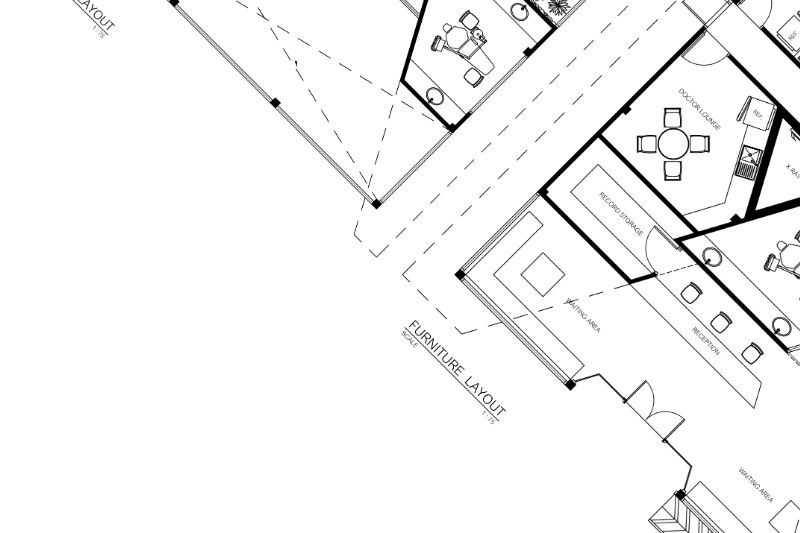Historical background of open-plan living
Open-plan living is not a new concept. Its roots can be traced back to the early 20th century when architects such as Frank Lloyd Wright began experimenting with open layouts. However, it wasn’t until the mid-20th century that open-plan living gained mainstream popularity. The post-war era saw a shift towards more informal and communal living spaces, with the removal of walls and boundaries becoming a symbol of modernity and progress.
Pros of open-plan living
One of the main advantages of open-plan living is the sense of space and freedom it creates. Without walls dividing the living, dining, and kitchen areas, the entire space feels larger and more connected. This open flow allows for easier social interaction, making it ideal for families and those who love to entertain. It also allows for better natural light penetration, as there are no barriers obstructing the flow of light.
Another pro of open-plan living is its versatility. With an open layout, homeowners have the flexibility to arrange their furniture and decor in various ways, adapting to their changing needs and preferences. This adaptability also makes open-plan living a great option for those who are looking to future-proof their homes. Whether it’s accommodating a growing family or repurposing the space for different activities, the open-plan layout can easily adapt to these changes.
Additionally, open-plan living promotes a sense of togetherness. With fewer physical barriers, family members can interact more easily, whether it’s cooking together, watching TV, or simply having a conversation. This enhances the overall quality of family life and fosters a stronger sense of community within the home.
Cons of open-plan living
While open-plan living has its advantages, it is not without its drawbacks. One of the main concerns is the lack of privacy. With fewer walls, it can be challenging to find a quiet space for focused work or relaxation. Noise from one area can easily travel to another, making it difficult to find peace and quiet when needed. This can be particularly problematic in households with different schedules or when hosting guests.
Another drawback of open-plan living is the potential for clutter and visual chaos. Without designated rooms or spaces, it becomes more challenging to hide everyday messes or create a sense of order. Maintaining a tidy and organized open-plan living area requires careful planning and storage solutions to ensure a clutter-free environment.
Lastly, open-plan living may not be suitable for all architectural styles. Certain period homes or properties with structural limitations may not lend themselves well to an open layout. It is important to consider the existing structure and architectural features when deciding whether open-plan living is the right choice for your home.
Modern layout trends in British homes
In recent years, open-plan living has evolved to accommodate the changing needs and preferences of homeowners. One notable trend is the integration of a multi-functional island or breakfast bar in the kitchen area. This not only provides additional workspace and storage but also serves as a social hub where family members and guests can gather while meals are being prepared.
Another popular trend is the incorporation of sliding or pocket doors. These allow homeowners to have the option of separating areas when desired, providing a balance between privacy and openness. This flexibility is especially useful in homes where open-plan living is desired, but occasional privacy is required.
Furthermore, the use of clever furniture and storage solutions has become more prevalent in modern open-plan layouts. From built-in shelving units to hidden storage compartments, these innovations help to keep the space organized and clutter-free while maximizing the available square footage.
Design considerations for open-plan living
When designing an open-plan living space, there are several key considerations to keep in mind. Firstly, it is important to create distinct zones within the open area. This can be achieved through the use of furniture placement, rugs, or even changes in flooring material. By visually separating different areas, you can define their purposes and create a sense of order within the larger space.
Secondly, lighting plays a crucial role in open-plan living. Strategic placement of light fixtures, such as pendant lights or recessed lighting, can help define and highlight specific areas within the open space. Additionally, incorporating natural light sources, such as skylights or large windows, can further enhance the openness and brightness of the space.
Lastly, acoustics should not be overlooked in open-plan living. Consider incorporating sound-absorbing materials, such as carpets or curtains, to help reduce noise transmission and create a more peaceful environment. Additionally, the use of furniture and decor items that have sound-dampening properties can also help mitigate noise issues.
Maximizing space in open-plan layouts
One of the key advantages of open-plan living is the potential for maximizing space. However, it is important to approach space optimization thoughtfully. Clever storage solutions, such as built-in cabinets or floating shelves, can help minimize clutter and keep the space organized. Utilizing vertical space, such as high ceilings, can also provide additional storage opportunities.
Furthermore, furniture selection is crucial in maximizing space in open-plan layouts. Opt for furniture with a streamlined design and multifunctional capabilities. For example, a sofa with built-in storage or a coffee table that can be extended to accommodate additional seating. This not only maximizes the functionality of the furniture but also helps to create a visually uncluttered space.
Another effective way to maximize space is through the use of mirrors. Mirrors can create the illusion of a larger space by reflecting light and views. Consider incorporating large mirrors strategically to visually expand the open-plan living area.
Creating zones in open-plan living areas
To avoid the potential drawbacks of open-plan living, it is important to create distinct zones within the space. This can be achieved through the use of furniture placement, rugs, or even changes in flooring material. For example, a large rug can define the seating area in the living room, while a different flooring material can demarcate the dining area.
Additionally, using different colors or textures for the walls or furniture in each zone can further enhance the sense of separation without the need for physical barriers. This allows each zone to have its own unique character while still maintaining a cohesive overall design.
Balancing privacy and social interaction in open-plan spaces
Finding the right balance between privacy and social interaction is crucial in open-plan living spaces. One way to achieve this is by incorporating movable partitions or screens. These can be utilized when privacy is desired, such as when working from home or when hosting guests overnight. By having the option to create temporary partitions, homeowners can enjoy the benefits of both open-plan living and privacy when needed.
Another effective way to balance privacy and social interaction is through thoughtful furniture placement. For example, positioning a sofa or shelving unit strategically can create a visual barrier without the need for physical walls. This allows for a sense of privacy while still maintaining a connection to the rest of the open-plan area.
Conclusion and future of open-plan living
Open-plan living has undoubtedly transformed the way we live in our homes. It offers a range of benefits, from a greater sense of space and flexibility to enhanced social interaction. However, it is important to consider the cons and design considerations associated with this layout.
As the trend continues to evolve, we can expect to see further innovations in open-plan living. From smart home technology that allows for customizable privacy settings to sustainable materials that enhance acoustics, the future of open-plan living holds great potential for meeting the diverse needs and preferences of homeowners.
In conclusion, navigating the pros and cons of open-plan living in British homes requires careful consideration of design, functionality, and lifestyle. By understanding the historical background, exploring the latest trends, and implementing thoughtful design choices, homeowners can create open-plan living spaces that maximize the benefits while minimizing the drawbacks.





